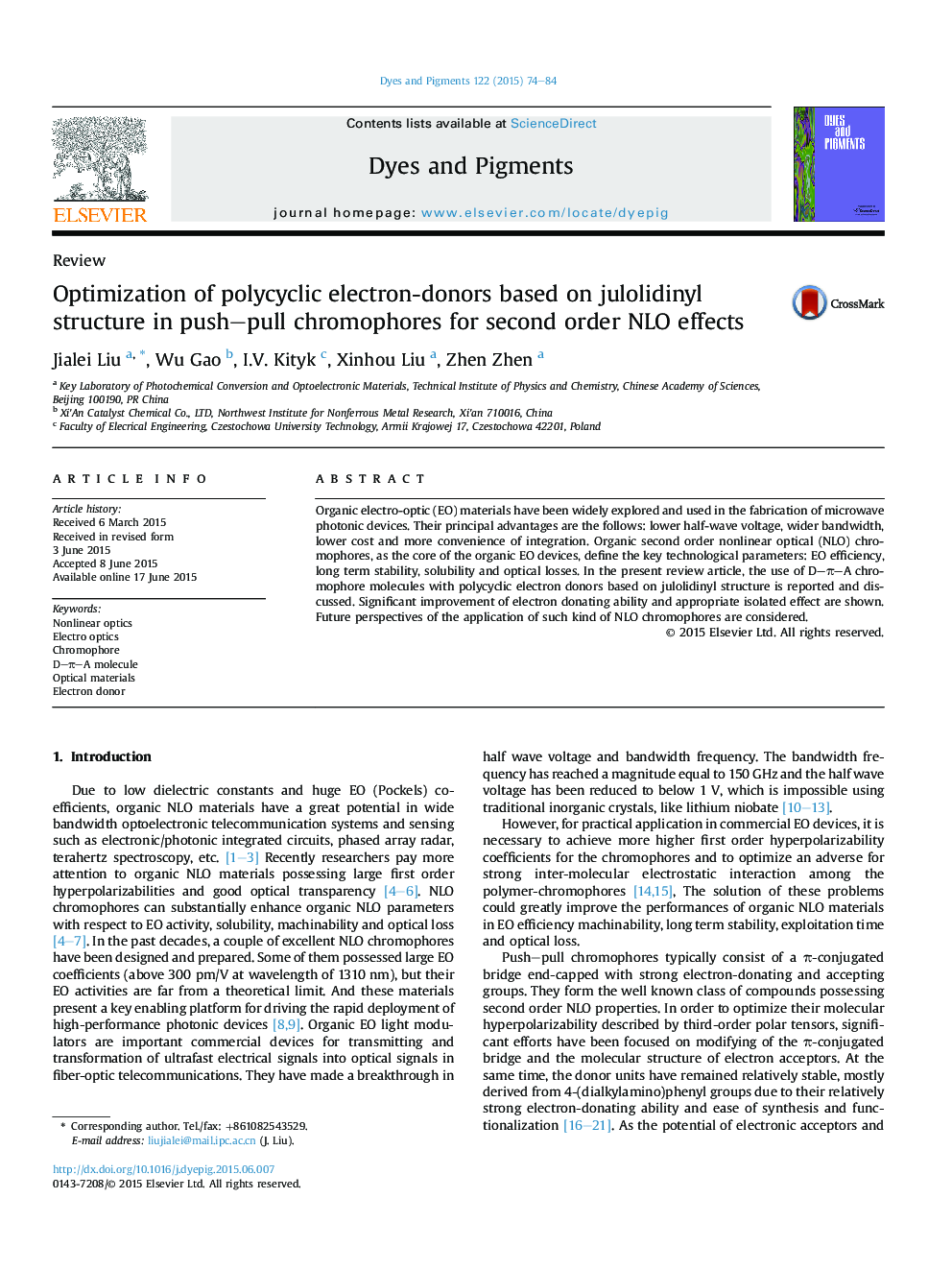| Article ID | Journal | Published Year | Pages | File Type |
|---|---|---|---|---|
| 175699 | Dyes and Pigments | 2015 | 11 Pages |
•Principles and application of NLO effects in organic materials are reviewed.•Advantages of novel electron donors with multi-cyclic structures are introduced.•The influences of modified groups with different shapes and lengths are discussed in details.•The advantages and multi-functions of auxiliary donor are discussed.
Organic electro-optic (EO) materials have been widely explored and used in the fabrication of microwave photonic devices. Their principal advantages are the follows: lower half-wave voltage, wider bandwidth, lower cost and more convenience of integration. Organic second order nonlinear optical (NLO) chromophores, as the core of the organic EO devices, define the key technological parameters: EO efficiency, long term stability, solubility and optical losses. In the present review article, the use of D–π–A chromophore molecules with polycyclic electron donors based on julolidinyl structure is reported and discussed. Significant improvement of electron donating ability and appropriate isolated effect are shown. Future perspectives of the application of such kind of NLO chromophores are considered.
Graphical abstractFigure optionsDownload full-size imageDownload as PowerPoint slide
